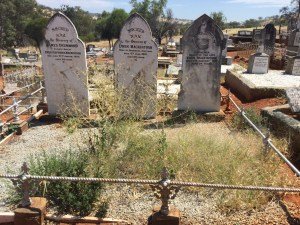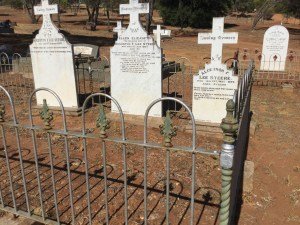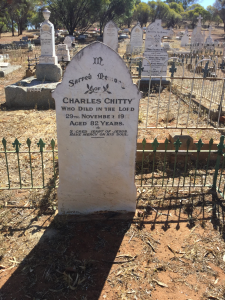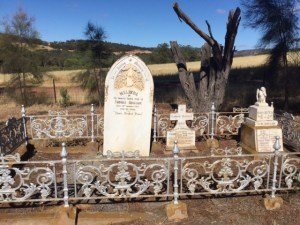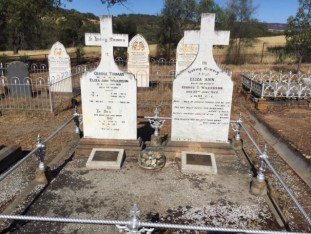To live in hearts we leave behind
Is not to die.
THOMAS CAMPBELL, Hallowed Ground
By Rebecca Doughty, Graduate Diploma of Archaeology and Cultural Heritage Management student
My final blog is written in memory of the courageous and adventurous explorers who founded the town of Toodyay and specifically the early settlers who have made it the town we see today. The burials of these prominent and key figures in the Toodyay cemeteries are testament to the social and economic status they enjoyed in life.
The phrase above suggests an easy life and a rich one, but the lives of these important men and women did not come easy and the only wealth they had to show was that which they made themselves.
Nardie Cemetery houses the descendants of the Chitty and Ferguson families, both of whom were prominent members of society during the settlement of Toodyay. Generations of family members are buried either here or in the Toodyay Cemetery and descendants still reside in the town today, committed to its upkeep and contributing to the community as their namesakes did long ago.
Katrine Cemetery contains a large component of the Sinclair family, with large family plots and generations of burials. The Sinclairs who reside in Toodyay today have carried on family occupations such as farming and teaching and work in cultural heritage for the Shire of Toodyay.
Culham Cemetery boasts the burials of early founders and settlers of the Phillip and Syred families. Both families contributed considerably to the early settlement of the township and outlying regions, such as Bejoording and Culham, setting up a church, schools and a smithy. Descendants of the families remain in the region, contributing to the community, as did previous generations of their families.
Toodyay Cemetery protects and reveres the families of Butterly, Harper and Drummond, all early founders and settlers of the region. Again, descendants of these families remain in the region and continue to support the community. Drummond was one of the original explorers and Harper the Reverend of the Avon Valley. Each of them have streets and monuments in their honour.
So ends my affair with the Cemeteries of Toodyay. Whilst it has been interesting, enjoyable and at times sad, on completion of my report for the Cultural Heritage Officer to add to the historical record of the region, it will also bring a sense of righteousness to allow these souls to rest in peace.
Nardie Cemetery, Dumbarton
Thank you for reading and I hope you have enjoyed the stroll through the cemeteries of Toodyay, WA.

